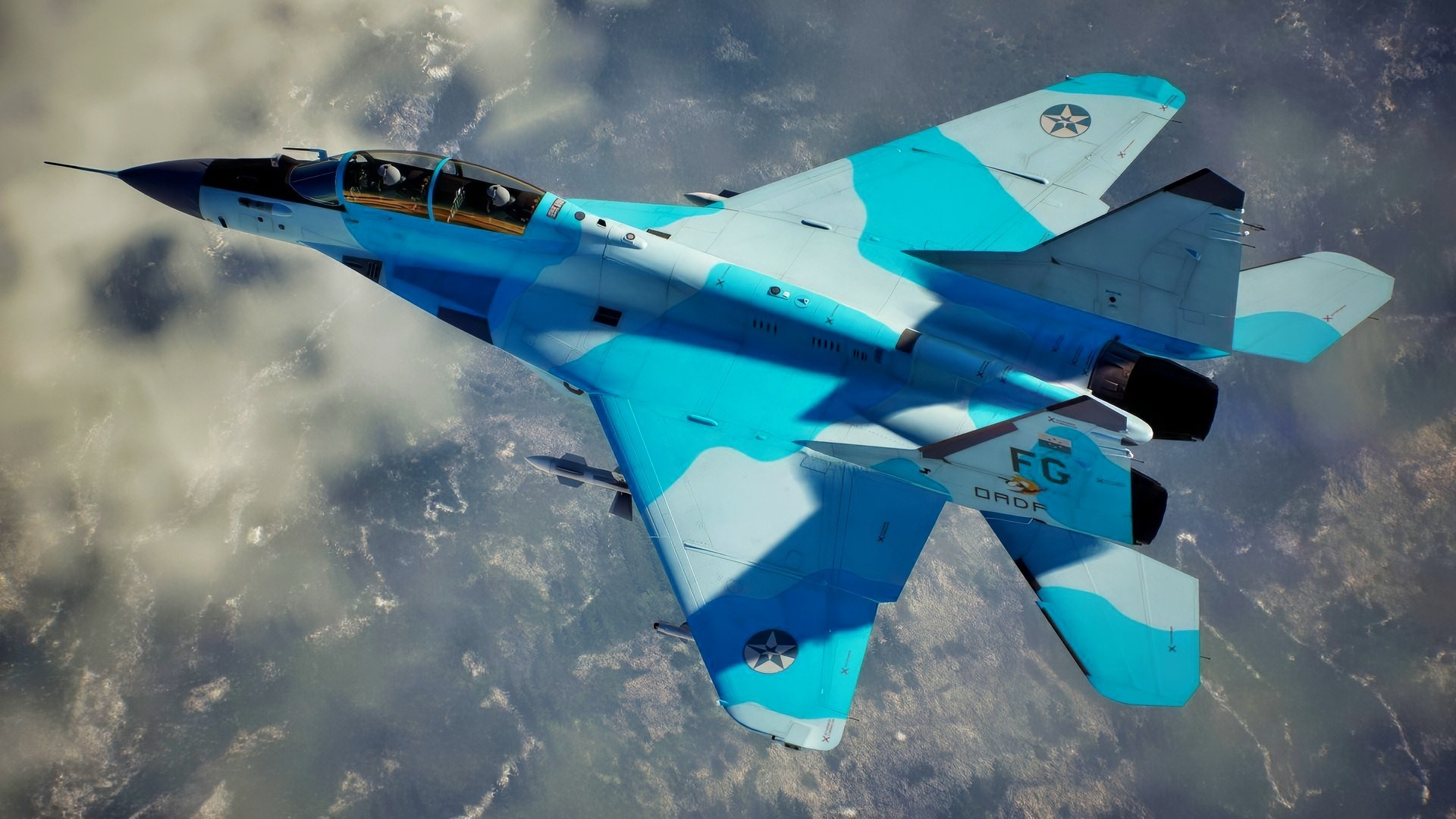Key Points and Summary – The MiG-35’s failure was a predictable outcome of its flawed concept. A warmed-over MiG-29, the jet was plagued by an undelivered advanced radar and inherent design limitations like short range.
-The war in Ukraine exposed its irrelevance, proving the need for long-range, networked aircraft over light dogfighters.
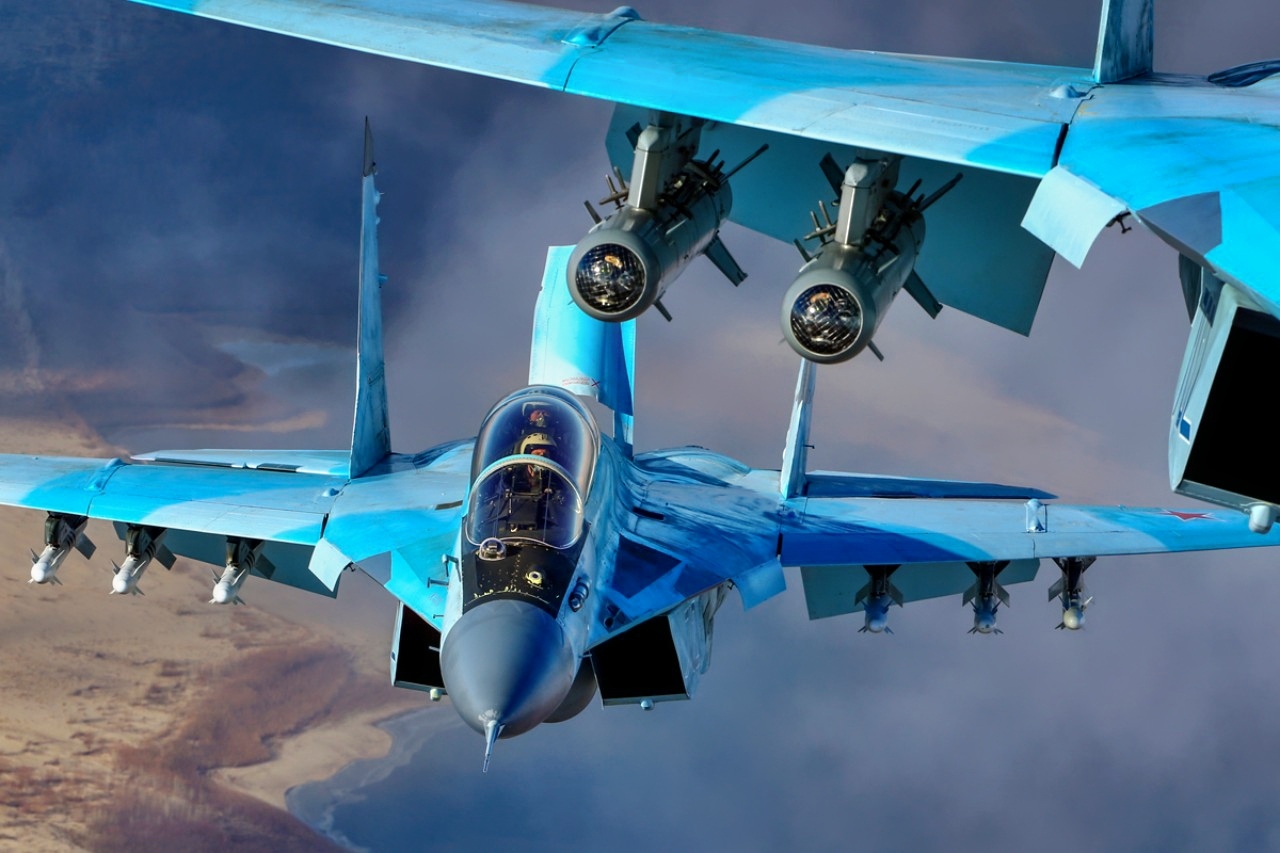
MiG-35 Fighters from Russia. Image Credit: Creative Commons.
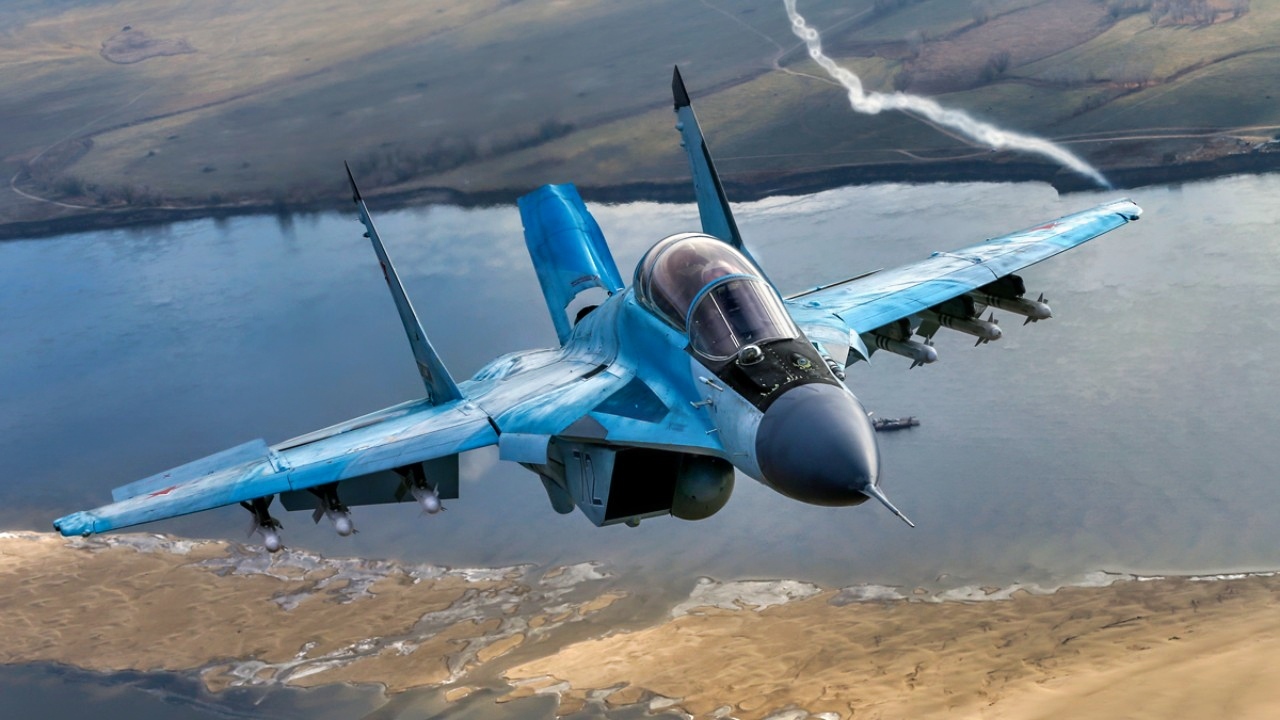
MiG-35 Russian Air Force Fighter. Image Credit: Creative Commons.
-Russia’s defense industry prioritized more successful Sukhoi programs, leaving the MiG-35 an underfunded afterthought with no export buyers.
-Ultimately, it failed because the battlefield, the budget, and its own technology moved on, leaving it a fighter with a brochure but no future.
MiG-35: The Fighter Jet That Was Doomed From the Start
The MiG-35 was meant to be Russia’s second chance at the light fighter, a cheaper, more agile counterweight to the heavyweight Sukhois and an export-oriented upgrade path for MiG-29 fleets around the world.
Instead it limped into production, limped through production, and watched its chances for a coherent military role evaporate as the war in Ukraine hit with the predictable impact of short legs, old sensors, and shallow industrial breadth.
The question about the MiG-35 is not why it failed. It is how it ever looked like a workable prospect once the math of modern air combat and the economics of the Russian defense industry came into focus.
The MiG-35 Debate
Start with the promise. In 2017 Moscow introduced the MiG-35 as a “4++ generation” refurbishment: a sleeker airframe, an avionics refresh, digital flight controls, and the always-tomorrow prospect of an active electronically scanned array radar. The marketing was straightforward: provide the bulk of an Su-27 Flanker’s capability for less cash, and sell in volume to air forces that already had MiG-29s. The Russian Air Force was briefly willing to pretend that this was possible too, placing a token order and hinting that further purchases were in the pipeline. A trickle of aircraft flowed out, but the promised cascade never materialized. From the beginning, the distance between brochure and program of record was where the MiG-35 went to die.
As usual, the rot began in the sensor suite and the engine. Well before the Ukraine war, discerning customers had already noted the fragilities that would come to haunt the type, including an unexciting radar roadmap and engines with limited margin for growth.
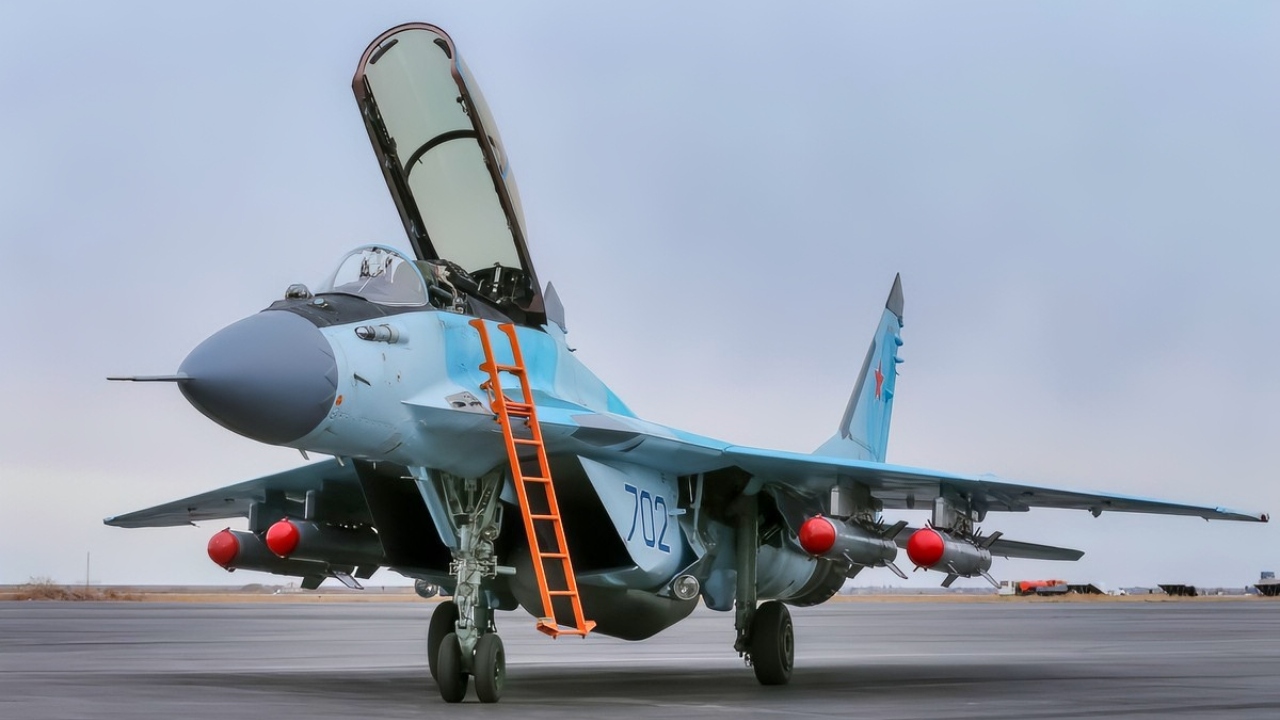
MiG-35 On the Runway. Image Credit: Creative Commons.
When a marquee customer comes to the conclusion early in the design phase that the platform’s performance ceiling is low, the export market hears it. Without a credible in-service AESA and propulsion headroom for heavier sensors and weapons, the MiG-35 asked its buyers to believe that tomorrow’s upgrade path would arrive on yesterday’s timeline. Trust is not a good procurement strategy.
Moscow tried to outrun physics and supply chains by promising that the radar was “coming soon.” Soon never came. Integration challenges were one thing in peacetime, but sanctions and microelectronics scarcity turned the bottlenecks into a deadlock in wartime.
The result was a fighter designed to look like it could compete with a MIG-29 Fulcrum but fielded with legacy sensors—too expensive to be “low cost” but not up to the task of competing.
A Fighter Fighter With No Purpose?
In the meantime, the mission moved on. The Ukraine war has been a ferocious fact-checker of concepts. Survivability has proven to depend less on a single airframe’s maneuverability and more on living in the shadow of a dense kill-web of one’s own sensors, jammers, decoys, and long-range weapons.
Range and payload are also gaining favor, because the only way to keep outside medium-to-long-range surface-to-air missiles and modern infrared search-and-track networks is through standoff employment. That naturally favors heftier multirole aircraft and loyal-wingman drones, not light-fighter derivatives with limited fuel and radar that never graduated.
In that fight environment, the MiG-35’s value narrowed to local air policing and rear-area assignments, with occasional news of drone-defense sorties in the Moscow area rather than front-line strike or sweep in a contested fight. That is not the career trajectory of a successful modern fighter.
Politics at United Aircraft Corporation finished the job. UAC’s absorption of defense aviation did not create balance; it consolidated a pecking order. The Su-34, Su-30, and Su-35 families were already high-throughput workhorses; the Su-57 was the sexy project.
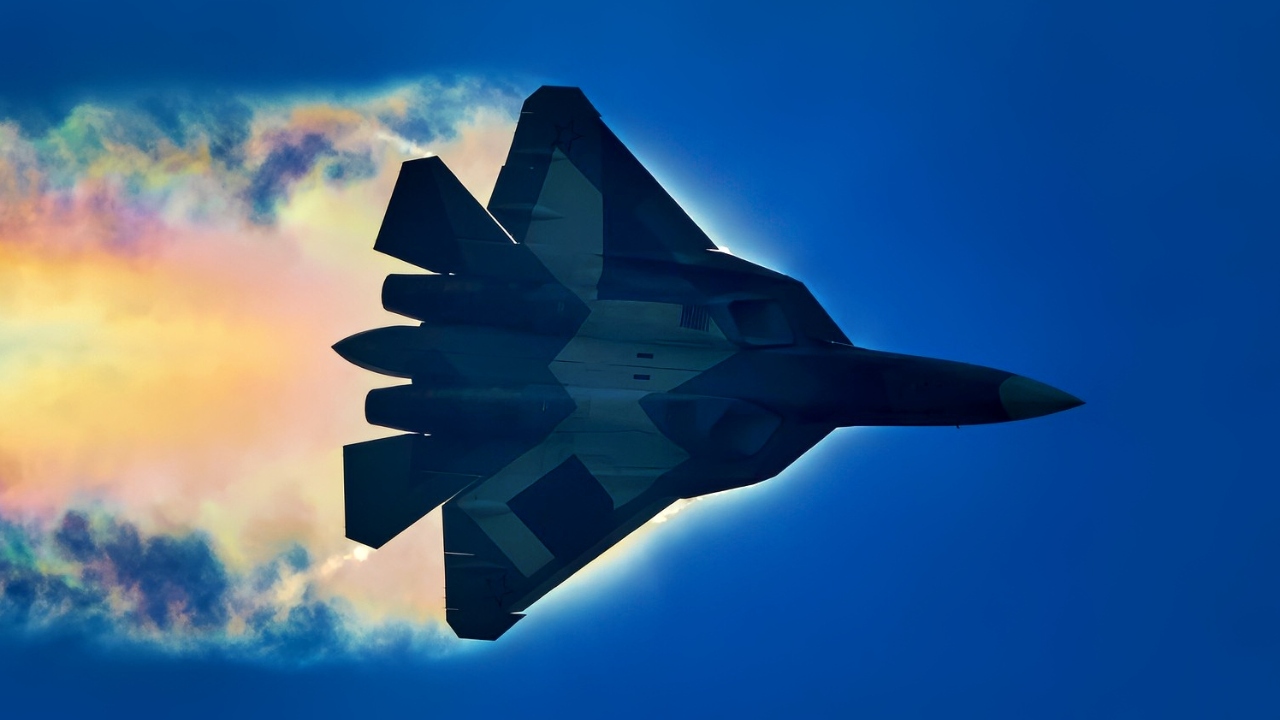
Su-57 Felon Fighter with Trail. Image Credit: Creative Commons.
Electronics and machine-tool capacity became a tighter bottleneck, and the rational choice was to prioritize lines that would deliver combat quantity. With paper-thin orders and a brittle supply chain, the MiG-35 ended up an afterthought, kept alive on the press lines and not the production lines.
Exports—crucial for a second-tier fighter—never materialized. Egypt’s big order was for MiG-29M/M2, not MiG-35. India closed its door long ago. Southeast Asia has cooled. Sanctions upended finance, spares pipelines, and insurance.
Even governments that were willing to take Russian support risk were finding Western upgrade kits or Chinese alternatives more attractive, simply because they came with an integrated sensor architecture, a coherent weapons envelope, and a clearer software path. In a market where a customer buys the radar, the mission computer, and the sustainment ecosystem—and treats the airframe as a delivery truck—the MiG-35 arrived with a truck and a brochure.
Underneath the politics and the marketing, there is a mismatch of design eras that no late-stage “value add” package can retroactively address. The MiG-35 brings the MiG-29 family’s fundamental design compromises to the table: limited internal fuel, modest sensor and cooling volume, and crowded wiring runs that make growth hard.
You can strap on fuel tanks, but you can’t fake persistence in an era when modern air defenses force you to stand off, orbit, coordinate, and re-attack with long-range weapons. Modern doctrine rewards platforms that power and cool hungry processors, fuse wide-area situational awareness, and push weapons from outside the threat envelope. That kind of staying power is a design choice, not a software upgrade.
Can the MiG-35 Survive?
It is possible that Russia could push out a small batch of airframes for status-of-the-force or rear-area defense, even in this environment. But serial trickle production is not the same as strategy. An effective light-fighter revival would also need two factors that Russia has struggled to produce at any scale in recent years: a resilient domestic microelectronics base for radar modules and mission computers, and an export finance apparatus with staying power enough to ride out sanctions. Without those, even heroic engineering effort cannot turn a warmed-over Fulcrum into a force-design centerpiece.
The counterargument is familiar: that a cash-strapped Russia needs a “good-enough” light fighter to backfill losses. That sounds good in a vacuum, but check it against the facts on the ground. In the real world of combat, “good enough” dies first in a battlespace awash in sensors and long-reach missiles.
What survives hides in the web, spoofs the picture, and strikes from outside the umbrella. That is a profile that favors larger multirole aircraft, specialized strike platforms, and networks of expendable drones over a boutique production run of manned light fighters with sensors that have already compromised themselves.
How did this thing fail? It failed because the battlefield, the balance sheet, and the bill of materials all moved against it at once. It failed because Russia’s fighter industry chose—rationally from its own point of view—to bet on big Sukhoi airframes and take a sabbatical from the light-fighter business while conserving scarce electronics for priority lines.
And it failed because the MiG-35’s selling point—a low-cost, early-arrival, better-sensors-later time-shift—ran headlong into a war that penalizes “later” and a market that buys software, sensors, and sustainment first and airframes second.
In an age of kill-webs and sanctions, an airplane is only as modern as the supply chain that supports its radar, and only as relevant as the doctrine that needs it. The MiG-35 taught that lesson the hard way. The rest of us should not need a second chance.
About the Author: Dr. Andrew Latham
Andrew Latham is a non-resident fellow at Defense Priorities and a professor of international relations and political theory at Macalester College in Saint Paul, MN. You can follow him on X: @aakatham. He writes a daily column for National Security Journal.
More Military
The U.S. Army’s Big M10 Booker ‘Light Tank’ Mistake Still Stings
The U.S. Navy Built Two Versions of the Littoral Combat Ship. Both Were a Mess.
The EA-18G Growler Has A Message for the U.S. Navy
Warship Goes Down Below the Waves: Navy F/A-18F Fighter Fires A Stealth Munition


